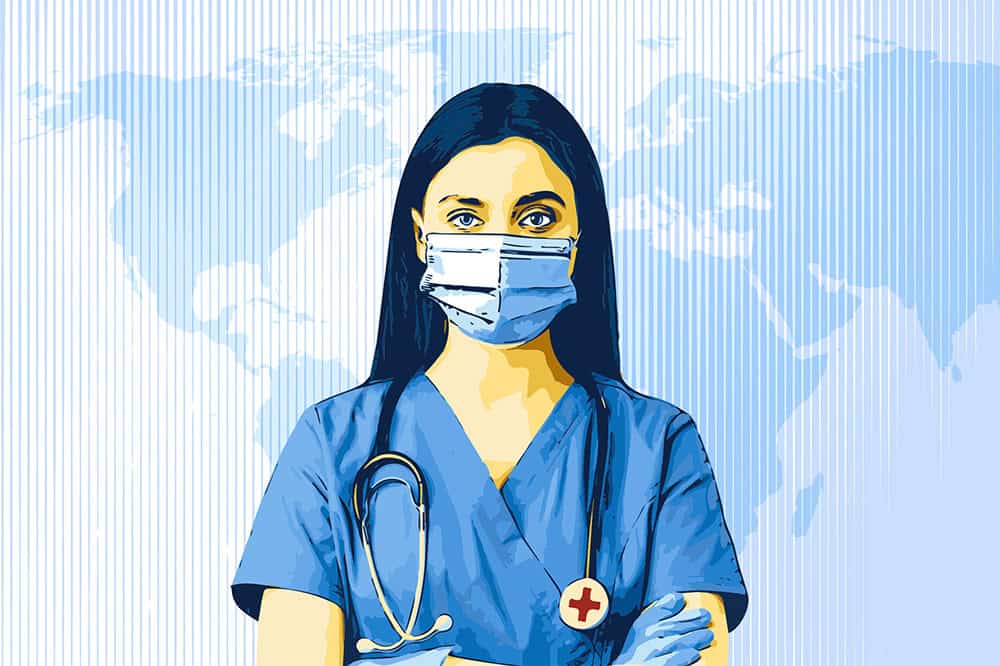U.S. Healthcare System Ranks Sixth Worldwide — Innovative but Fiscally Unsustainable
Last Updated February 3, 2022
The 2021 World Index on Healthcare Innovation, conducted by the Foundation for Research on Equal Opportunity (FREOPP), ranked the United States in 6th place among the world’s healthcare systems. The analysis finds that the United States is a global leader in scientific advancement but that our healthcare system is fiscally unsustainable.
The Index evaluated the national healthcare systems of 31 high-income countries on four key dimensions: quality, choice, fiscal sustainability, and science and technology. Those categories were chosen to examine not only the quality of each healthcare system, but also the ability of that system to improve over time through scientific and medical advances.
The Index finds that the top five national healthcare systems — Switzerland, the Netherlands, Germany, Ireland, and Israel — have all achieved universal coverage in part by relying on private insurance. In fact, Switzerland, the Netherlands, and Israel have universal private healthcare systems in which all citizens are covered by mandatory private insurance. Those countries empower patient choice and allow private insurers to innovate without delays from political or regulatory inaction. In addition, those systems tend to be more fiscally sustainable because subsidies are phased out for wealthier patients.
Ultimately, the United States ranked 6th overall, a result of excellent scientific advancement (1st), good quality (10th), moderate choice (20th), and poor fiscal sustainability (29th). Such rankings allude to the nation’s relative strength in research and development along with its struggle to control rising government spending on healthcare.
The Index emphasizes the importance of innovation in improving healthcare outcomes. Advances in scientific development, healthcare service delivery, and personalized care are recognized as essential components of high-quality healthcare systems. FREOPP calculated the strength of each national healthcare system using 13 elements based on 33 separate measures, from the number of primary care physicians per capita to the national debt-to-GDP ratio. The Index was updated in 2021 to emphasize measures of pandemic preparedness and assess the effectiveness of each national healthcare system’s response to COVID-19.
Science and Technology
The United States ranked first in science and technology by a wide margin. That result stems from U.S. leadership in the number of new drugs and medical devices gaining regulatory approval. The country also ranks near the top in scientific Nobel prizes per capita, scientific impact in academia, and research and development expenditures per capita. Those achievements make some of the most innovative and cutting-edge medical treatment options in the world available to Americans before they are accessible elsewhere.
Quality
The United States ranked 10th in quality, a consequence of mixed results on the element’s measures. The nation performed well on measures of patient-centered care, including relatively low wait times for care and good patient involvement in medical decisions. However, the United States ranked lower for pandemic preparedness and response (17th). It also was judged to have relatively poor healthcare infrastructure, with the lowest number of primary care physicians per capita among the nations surveyed. Those rankings highlight that scientific advancement does not necessarily guarantee better healthcare outcomes. In fact, the United States does not perform particularly well compared to other developed nations on a number of different healthcare outcomes, as measured by the Organisation for Economic Co-operation and Development (OECD).
Choice
The United States ranked 20th in choice, despite the availability of most new medical advancements. This is because choice encompasses more than just new treatment availability; it also includes the affordability of health insurance and the freedom to choose healthcare services. The United States ranked last in affordability as a result of high healthcare prices, highlighting that treatment availability does not guarantee accessibility for ordinary Americans.
Another way the Index measures the freedom to choose healthcare services is through the amount of out-of-pocket healthcare expenditures; FREOPP judges that healthcare markets are most efficient when patients are directly spending on their own care. This is because higher out-of-pocket spending on a national level indicates that individuals can choose the type of care that fits within their own budget. Despite several nations in the Index with single-payer systems, the United States ranked second to last in out-of-pocket healthcare expenditures.
Fiscal Sustainability
The United States ranked 29th in fiscal sustainability, ahead of only France and Japan. Healthcare costs in the United States are far higher than those in other countries. In 2020, U.S. healthcare expenditures were $10,948 per capita — nearly three times the average of other OECD countries. Such spending is likely to continue growing rapidly; the Congressional Budget Office projects that spending on major federal healthcare programs will rise from 5.7 percent of GDP in 2022 to 9.4 percent in 2051 — an increase of 64 percent.
What Does the Index Imply for U.S. Healthcare?
FREOPP’s report reflects the United States’ role as a world leader in scientific and technological advancement in healthcare. At the same time, spending on healthcare in the United States has far outpaced other major healthcare systems without yielding better outcomes. The Index makes clear that further innovation, beyond pure scientific advancement, is necessary to control rising costs and ensure high-quality healthcare is accessible to every American. Achieving higher healthcare performance will also contribute positively to America’s ongoing fiscal challenges.
Photo by Spencer Platt / Getty Images
Further Reading
How Does Government Healthcare Spending Differ From Private Insurance?
Government insurance programs, such as Medicare and Medicaid, made up 45 percent, or $1.9 trillion, of national healthcare spending.
7 Key Facts About Rising Healthcare Spending in the U.S.
Healthcare spending in the United States is a key driver of the nation’s fiscal imbalance and has risen notably over the past few decades.
Infographic: U.S. Healthcare Spending
Improving our healthcare system to deliver better quality care at lower cost is critically important to our nation’s long-term economic and fiscal well-being.


